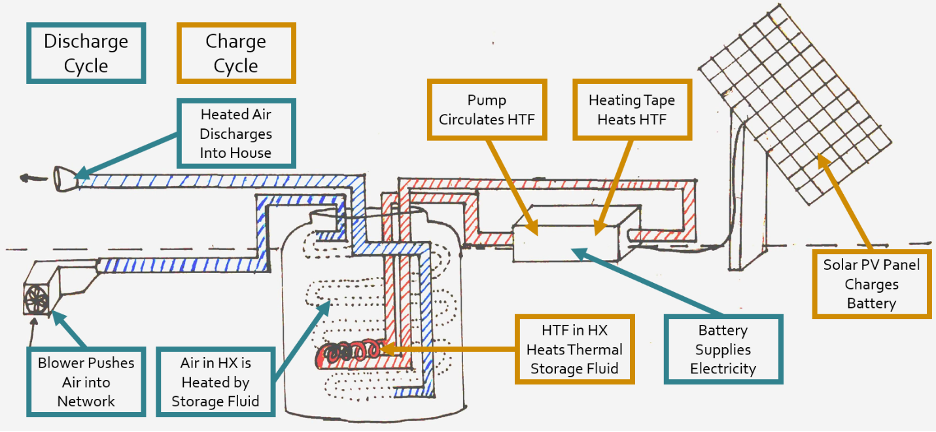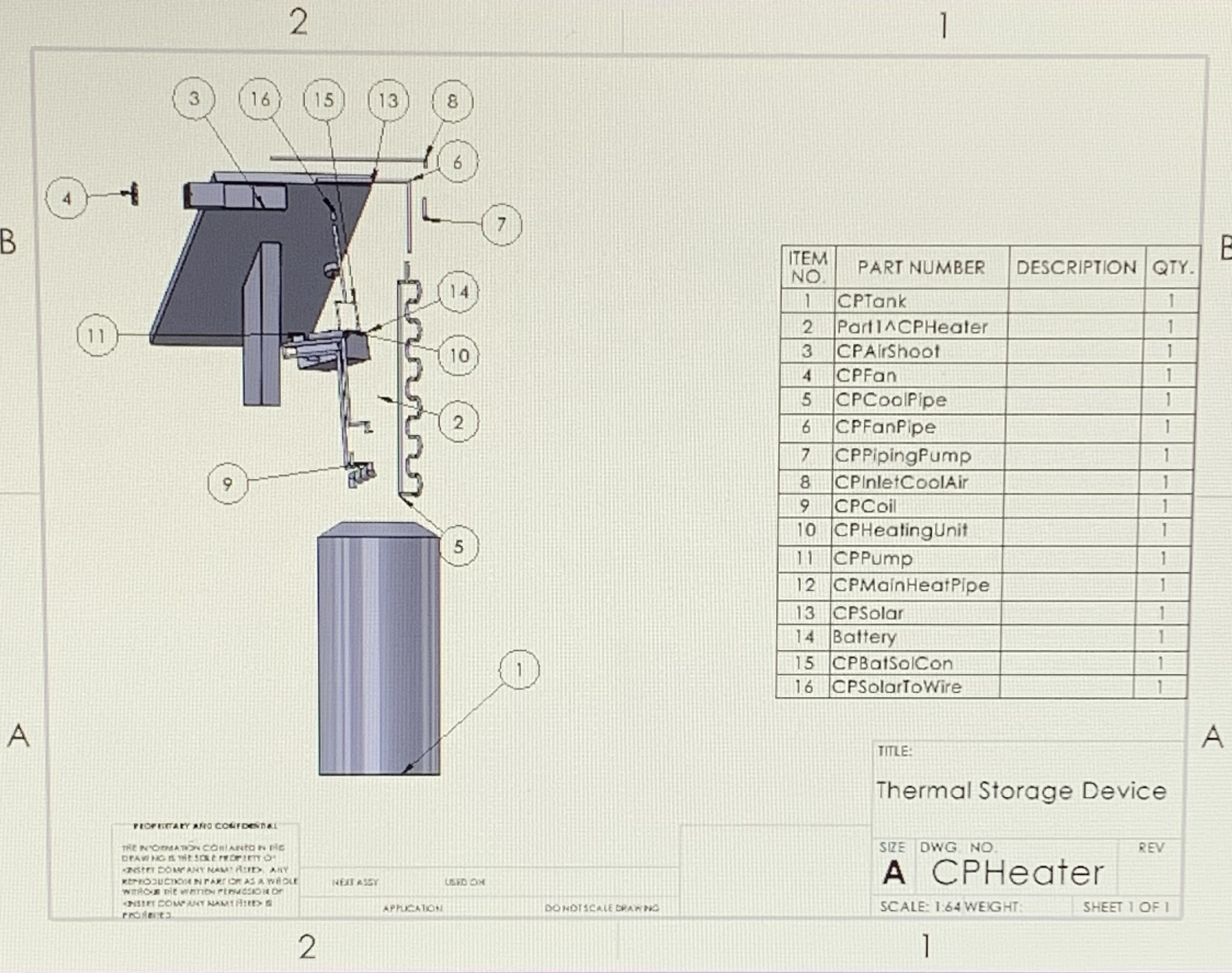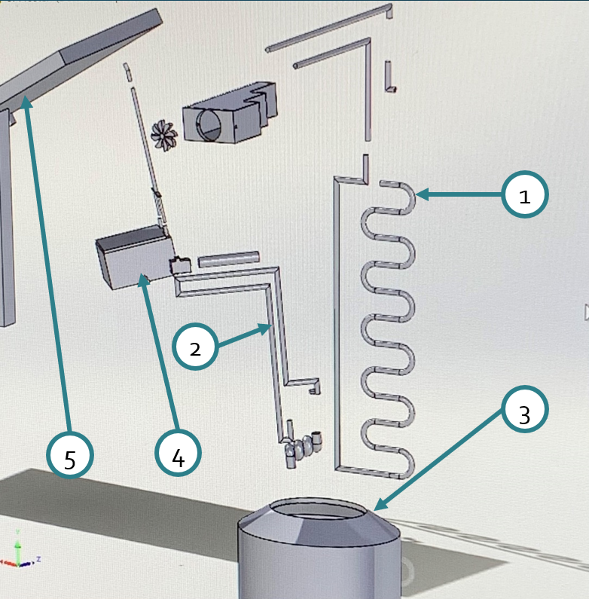Final Design Details
This page contains information on the design selected by the team for prototyping during the spring semester.
System Schematic:
The system goes through two different cycles while in operation, one during the day and one at night. These are distinguished by color in the image shown.
During the day, the system goes through the charge cycle. In this cycle, the pump circulates “cool” heat transfer fluid (HTF) through the heating tape section of fluid heating network, where it is heated. From there, it moves through the pipe network into a fluid-to-fluid heat exchanger (HX) immersed in the tank. Here, heat moves from the transfer fluid to the storage fluid, “charging” the thermal battery. This cycle continues until the tank reaches a pre-determined temperature threshold.
At night, the system goes through the discharge cycle. In this cycle, a blower pushes air from the house into the air pipe network. Here, air passes through the heated thermal storage tank, where it is warmed in a liquid to gas heat exchanger. From there, it flows through the remainder of the pipe network out of the tank, and back into the house. This cycle continues throughout the night, with air speed and heat transfer varying according to the inputs of the control system.

CAD Drawing:
The drawing below is a CAD model of the device. This text is a description of the device/CAD model.

